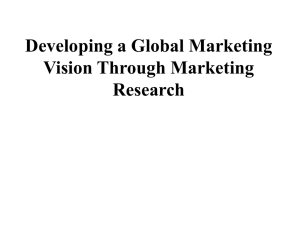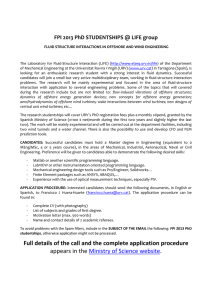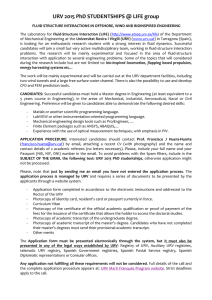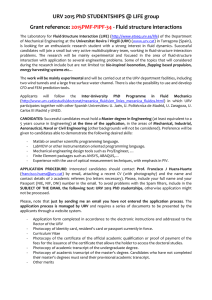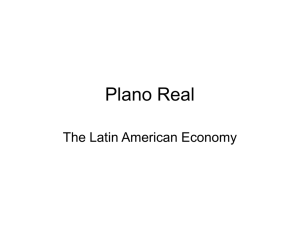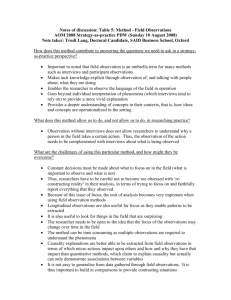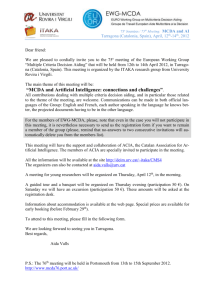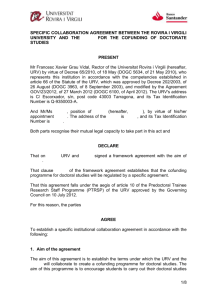Chapter 8
advertisement
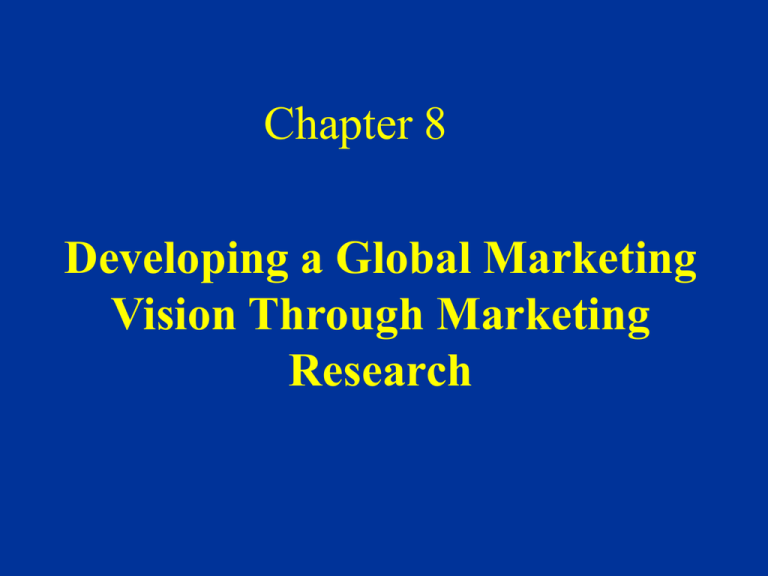
Chapter 8 Developing a Global Marketing Vision Through Marketing Research Defining the Issue • What is marketing research? • Traditional view – “the function that links the consumer, customer, and public to the marketer through information” • Redefined view – “systematic and objective identification of information, collection, analysis and dissemination of information for the purpose of improving decision making related to the identification and solution of problems and opportunities in marketing” International Marketing Research I. Differences with Domestic Research - New parameters - New environments - More factors to consider - More competitors Recognizing the Need for Research • Reasons that executives may view international research as unimportant: – Lack of sensitivity to differences in consumer tastes and preferences. – Limited appreciation for the different marketing environments abroad. – Lack of familiarity with national and international data sources and the inability to use them. – Actual but limited business experience in a country or with a specific firm may be used as a substitute for organized research. International Marketing Research II. Why do International Marketing Research? - Reduce Risk of Failure - Identify opportunities - Lead to more informed decisions - Reduce mistakes III. The IMR Process - Step 1 : Problem Definition - Step 2 : Examine Secondary Data Researching Foreign Market Potentials Stage 1: Preliminary Screening for Attractive Country Markets Key Question: Which Foreign Markets Warrant Detailed Investigation? Stage 2: Assessment of Industry Market Potential Key Question: What is Aggregate Demand for Each Warrant Selected? Stage 3: Company Sales Potential Analysis Key Question: How Attractive is the Potential Demand for Company Products/Services? The Scope of International Marketing Research International Marketing Decisions Requiring Marketing Research M arketin g M ix T yp e o f R esearch D ecisio n P roduct policy F ocus groups and qualitativ e research to generate ideas for new products S urv ey research to ev aluate new product ideas C oncept testing, test m arketing P roduct benefit and attitude research P roduct form ulation and feature testing P ricing P rice sensitiv ity studies D istribution S urv ey of shopping patterns and behav ior C onsum er attitudes toward different store types S urv ey of distributor attitudes and policies A dv ertising A dv ertising pretesting A dv ertising posttesting, recall scores S urv eys of m edia habits S ales S urv eys of responses to alternativ e types P rom otion of prom otion S ales F orce T ests of alternativ e sales presentations Source: Susan P. Douglas and C. Samuel Craig, International Marketing Research, Copyright 1983, p.32. Reprinted by permission of Prentice Hall, Inc., Englewood Cliffs, New Jersey. International Marketing Research IV. Data Sources - a wide variety are available. V. Advantages of Secondary - Fast - Inexpensive - Can aid in further research Secondary information requirements • What do you really need to know? – Was sufficient research conducted to answer the research question(s)? – Is macro data sufficient or will micro data be required to complete the market assessment and selection? – What market restraints are present ? – Is knowledge of international accords required? – Is specific product data necessary for marketing mix determination? International Marketing Research VI. Disadvantages of Secondary Data - May not be accurate - Difficult to trace methodology - Data becomes quickly outdated - Not collected for specific task at hand Sources of Data • Governments – Departments of Commerce, Agriculture, State, Treasury, and U.S. embassies abroad • International organizations – United Nations’ Yearbook, World Bank’s World Atlas, Organization for Economic Cooperation and Development (OCED) and World Trade Organization (WTO) publications • Service organizations – Banks, accounting firms, freight forwarders, airlines, and international trade consultants The Research Process Major Sources of Secondary Data U.S. DEPARTMENT OF COMMERCE Foreign Trade Report: U.S. exports by commodity and by country Global Market Surveys: Global market research on targeted industries INTERNATIONAL MONETARY FUND International Financial Statistics: Monthly report on exchange rates, inflation, deflation, country liquidity, etc. UNITED NATIONS Statistical Yearbook: Population, production, education, trade, etc. THE ECONOMIST E.I.U. World Outlook: Forecasts trends for 160 Countries Marketing in Europe: Product markets in Europe Validating Secondary Data • Who collected the data ? Would there be any reason for purposely misrepresenting the facts ? • For what purpose were the data collected ? • How were the data collected ? (Methodology) • Are the data internally consistent and logical in light of known data sources or market factors ? International Marketing Research VII. - Step 3 : Consider Costs and Benefits of the Research Effort VIII.- Step 4 : Primary Data Collection International Marketing Research Primary data is collected for the specific research problem at hand 1) Major Types of Primary Research i) ii) iii) 2) Exploratory Descriptive Causal Research Techniques i) ii) iii) iv) Interviews Focus Groups Observation Surveys International Marketing Research IX. - Step 5 : Analysis and Interpretation X. - Step 6 : Communicate Results Effectively The Research Process Table 6.4: Comparison of European Data Collection Methods Mail Telephone Central location/ streets Home/work Groups Depth interviews Secondary France 4% 15 Netherlands 33% 18 52 -13 12 4 37 --12 -- Sweden Switzerland U.K. 23% 8% 9% 44 21 16 -8 5 2 4 -44 6 8 8 Source: Emanuel H. Demby, “ESOMAR Urges Changes in Reporting Demographics, Issues Worldwide Report,” Marketing News, January 8, 1990, p. 24. Reprinted by permission of the American Marketing Association. -54 11 --- Gathering Primary Data Quantitative Research Qualitative Research Determining the Research Technique • Objectivity requirements for the acquired data – Standard collection techniques work best with objective data. Subjective data collection takes more effort to collect and interpret. • Soft data and hard data – Subjective (soft) data from dealer interviews and objective (hard) data from shipments, inventories, and retail sales. • Interviews – Knowledge persons are a valuable information resource (personal bias must be discounted). Uses of Internet in International Research • On-Line Surveys • On-Line Focus Groups • Web Visitor Tracking • Advertising Measurement • Customer Identification Systems • E-Mail Marketing Lists SOURCE: John A. Quelch and Lisa R. Klein, “The Internet and International Marketing,” Sloan Management Review: Spring 1996. Pp. 60-75 Talents Required to Analyze and Interpret Research Information • Cultural Understanding • Creative Talent for Adapting Research Findings • Skeptical Attitudes when Handling Both Primary and Secondary Research
